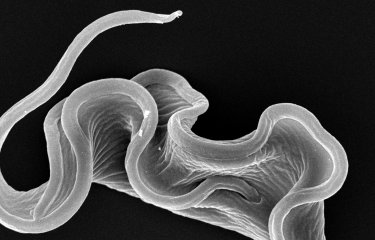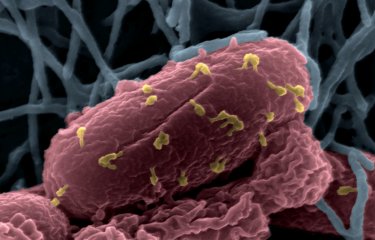Cilia and flagella – cellular projections attached to the membrane – are involved in numerous processes, for example sensory signal reception or cell movement. The diseases affecting these projections, ciliopathies, result from defects linked to cilia and flagella length. Institut Pasteur scientists have tried to unravel the mechanisms controlling the length of the appendages in the hope of improving diagnosis of these complex medical conditions and perhaps developing new therapeutic approaches.
Cilia and flagella are antennae present on the surface of cells. Some of them are non-motile and used to detect signals, while others are motile and responsible for motility of the cell or the environment around it. They vary in size (1 to 100 µm) from one cell type to another. Defects in length are linked to genetic diseases known as ciliopathies. They comprise a group of severely debilitating genetic disorders that impair the development and function of some organs, such as the brain, kidneys or eyes.
The trypanosome, a widely studied protozoan
Each cilium or flagellum has a set length – a process that has fascinated scientists for years. Eloïse Bertiaux, a PhD student in the Trypanosome Cell Biology Unit at the Institut Pasteur (Paris), directed by Philippe Bastin, wanted to understand how cilia and flagella length could be controlled. She worked on the trypanosome, a flagellated protozoan that is easy to handle in the laboratory. "The trypanosome is already known to be responsible for sleeping sickness in Africa but also constitutes a prime working model for studying cilia and flagella", points out Philippe Bastin. When this parasite infects its host or the tsetse fly, it goes through several stages of development, during which it assembles flagella of different lengths and compositions. This provides a valuable source of information for researchers.
From regulating cilia length to understanding ciliopathies
By manipulating the machinery responsible for building flagella, the scientists have produced trypanosomes that assemble flagella of different lengths. "Our study demonstrates that cells extend their flagella at a given rate and stop elongation by a locking process," explains Philippe Bastin. "Once the flagellum is locked, the length is set. Cells can therefore regulate the length of the flagellum either by changing the growth rate or by changing the time when locking is applied."
This grow-and-lock model will be used to study the causes of cilia and flagella length defects in patients with ciliopathies in the hope of better diagnosing these complex medical conditions and possibly developing new approaches for their treatment.
Source
A grow-and-lock model for the control of flagellum length in trypanosomes, Current Biology, November 15, 2018.
Eloïse Bertiaux1,2,4, Benjamin Morga1,3,4, Thierry Blisnick1, Brice Rotureau1 & Philippe Bastin1,5
1. Trypanosome Cell Biology Unit, Institut Pasteur & INSERM U1201
2. Université Pierre et Marie Curie Paris 6, Cellule Pasteur - UPMC
3. Laboratoire de Génétique et Pathologie des Mollusques Marins, Station de La Tremblade - Ronce Les Bains - France
4. Equal contribution
For more information, please visit








